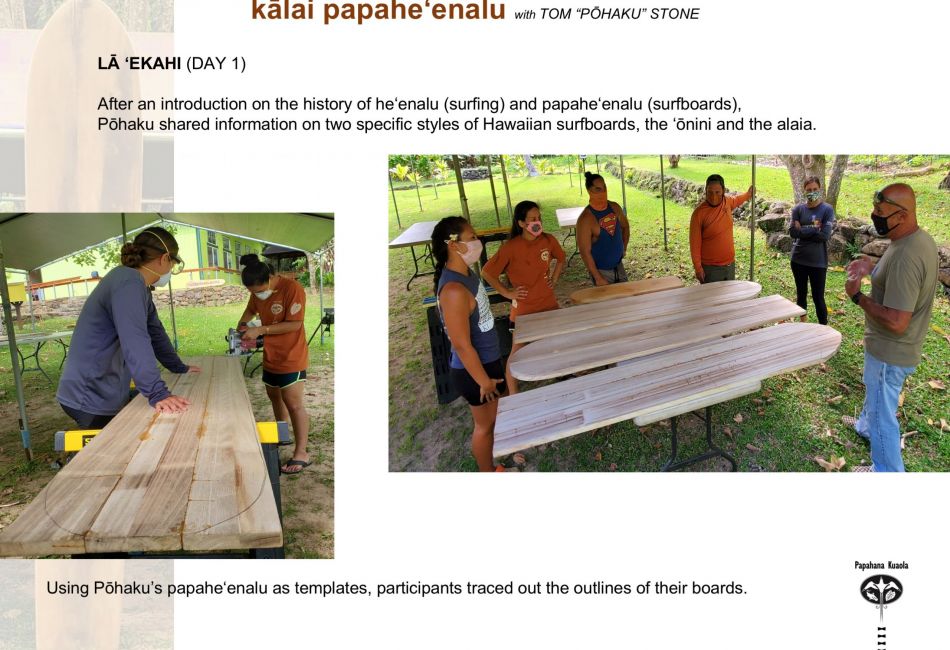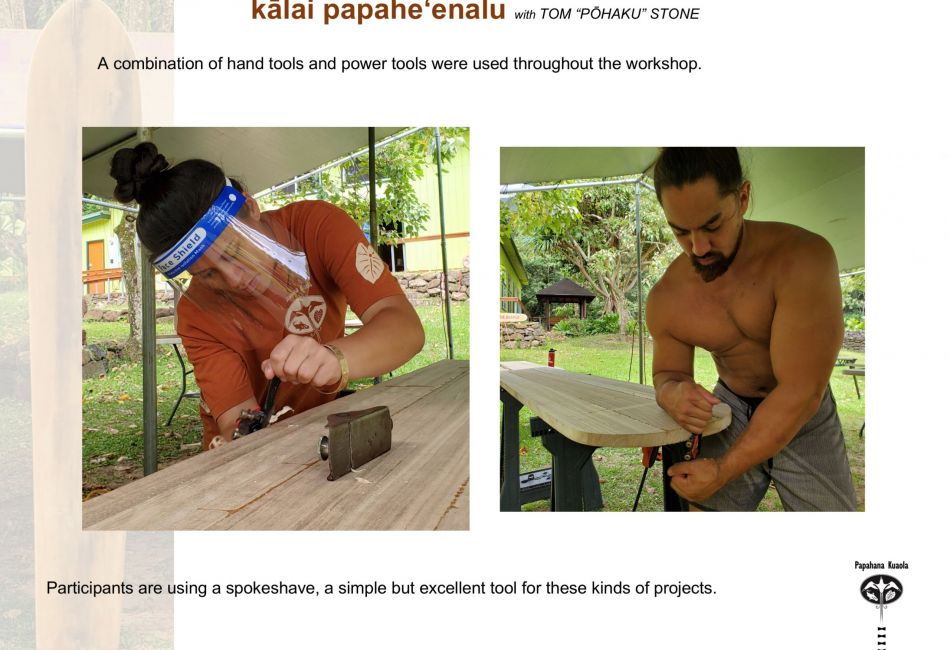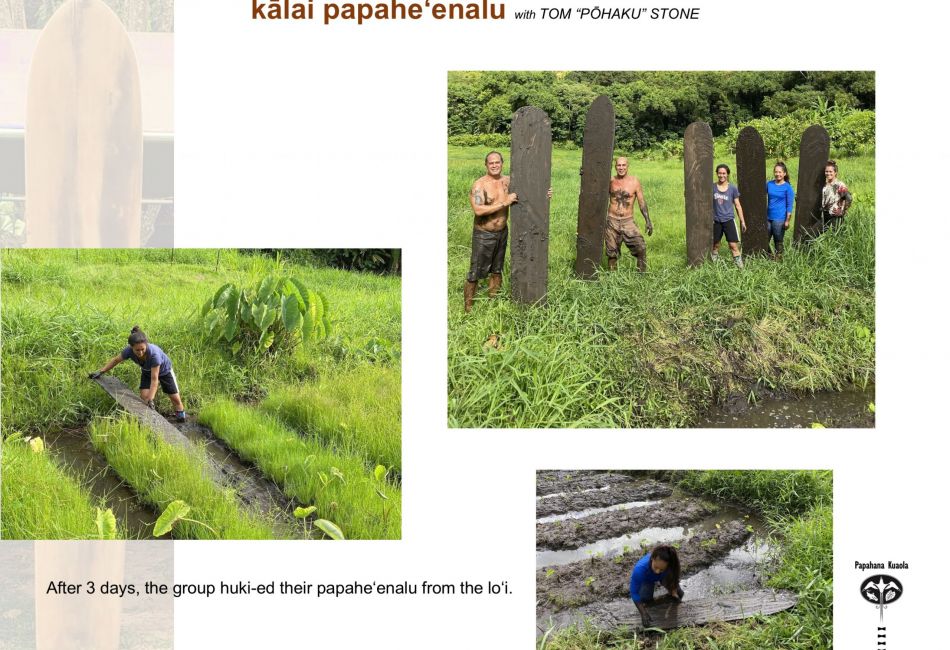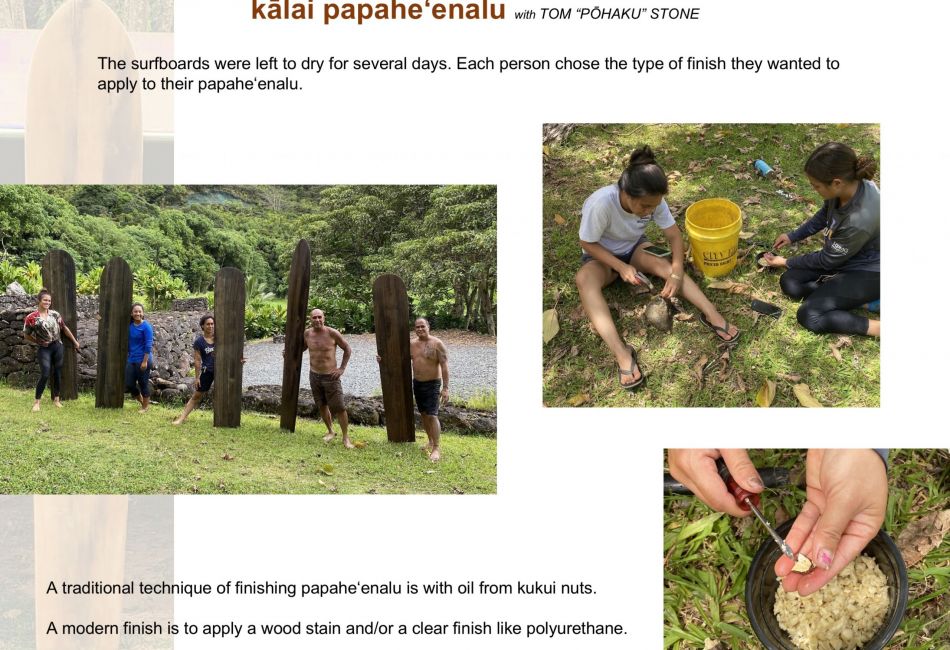KĀLAI PAPA HEʻENALU
Hawaiian wood surfboard crafting
This workshop supports the perpetuation, preservation, and practice of Hawaiian wood surfboard crafting by providing opportunities for the Hawaiian community to learn from cultural practitioner, Tom “Pōhaku” Stone, through a two-day, culture-based community workshop that will inspire and enable the community to engage in cultural traditions and practices.
Pōhaku introduced participants to the history and significance of heʻenalu (surfing) and papaheʻenalu (surfboards). He demonstrated and guided them through the process to kālai (shape, carve) two types of traditional Hawaiian papaheʻenalu – the ʻōnini and the alaia styles. This workshop was funded by the Institute of Museum and Library Services, Native Hawaiian Library Services program.
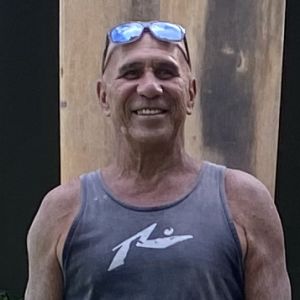
Cultural Practitioner, Tom “Pōhaku” Stone
Tom “Pōhaku” Stone, a legendary native Hawaiian surfer and waterman, has been on a life long journey in search of his cultural heritage. He is credited with single handedly revitalizing the sport of heʻe holua (Hawaiian sledding), a centuries old extreme sport, and for the past several years he has been sharing his knowledge and his aloha as a teacher and craftsman, instructing students in the arts of sled building and ancient surfboard carving. Through this balance of riding, teaching, and craftsmanship, Pōhaku has found peace within himself and a sense of pride in his culture that can never be broken. It is this peace and pride that is put into every papa holua and papa heʻe nalu he crafts, making these works of art truly “He mea Kanaka Maoli – Native Made.” –www.hawaiibc.com

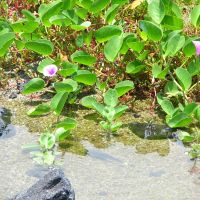
“If there was a serious dearth of surf in a particular area, the appointed Kahuna (priest) would take several strands of the pohuehue and, in unison with the swimming party swing the vines around and lash them unitedly upon the water until the desired undulating waves were obtained.”
-An Account of the Polynesian Race by Abraham Fornander (1878)


This ʻŌlelo Noʻeau speaks of a prolific surf break in Waikīkī. One that is best known for itʻs “long curling wave.” In the time of our kūpuna certain surf breaks were seen as kapu and reserved for only aliʻi to ride. Moʻolelo tell us that a lehua lei was given to break this kapu.
In 1917 it was said that Duke Paoa Kahanamoku rode the longest wave from Kalehuawehe on his 16 foot long board that weighed 114 pounds. This “longest ride” took him from Kalehuawehe all the way to the beach in an area known as “Canoe’s,” today.
Heʻenalu or surfing was a sport of akua and aliʻi. Moʻolelo and history tell us that wahine or women were greatly skilled and respected surfers. This short moʻolelo that we share with you speaks of Pele’s love for surfing, her love for her younger sister Hiʻiaka and the Pāʻū o Hiʻiaka that grows to protect this beloved keiki.
Pele and Baby Hiʻiaka

Pele grabbed her surfboard and paddled out into the ocean. She caught a big wave and rode it all the way back to shore. She paddled out into the deep water and surfed another wave, and another and another. What an amazing time she was having! In the excitement of surfing, Pele totally forgot about her baby sister sleeping on the sand.

Source: Tales of the Menehune by Mary Kawena Pūku‘i and Caroline Curtis.




